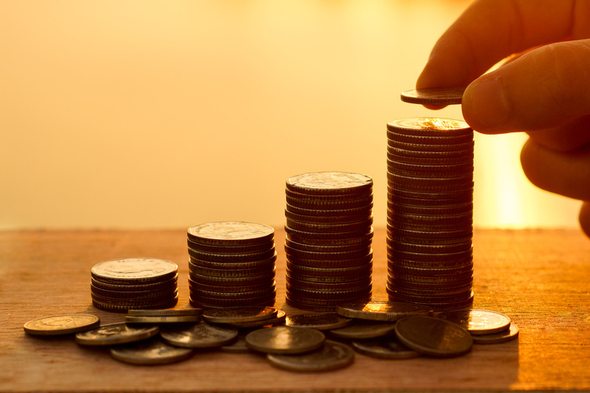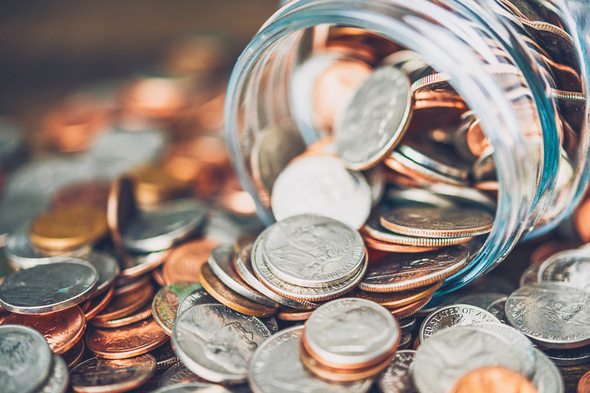An emergency fund can be a lifesaver if you find yourself in a tight spot. But the amount of savings you have may vary depending on where you park your rainy day fund. While a traditional savings account is more secure than stuffing cash under a mattress, it won’t generate as much interest as a certificate of deposit (CD). Here’s everything you need to know about using a CD ladder to build an emergency fund.
A financial advisor can provide additional insights into how to build a CD ladder and other savings strategies to help build your emergency fund.
What Is a CD Ladder?
Before you can understand what a CD ladder is, you’ll need to understand how certificates of deposit work.
A certificate of deposit is a savings vehicle. But putting money into a CD is different from making a deposit into a regular savings account. With a savings account, you can withdraw money as needed. With a CD, you can’t make any withdrawals until it matures.
Maturity terms can range from three months to five years. Once your CD matures, you can withdraw the cash (along with the interest) or roll it over into a new CD. Generally, the longer the CD term, the higher the annual percentage yield (APY) is likely to be.
Should You Use a CD Ladder for Emergency Funds?

Using a CD ladder to build an emergency fund can be a good option if you want to earn more interest than a regular savings account. CDs usually pay higher rates, especially for longer terms. Some CDs compound interest daily, which helps your savings grow faster over time. This can make your emergency fund more effective without adding much risk.
The key benefit of a CD ladder is that it helps balance access and earnings. By dividing your savings into CDs with different maturity dates you’ll be able to access funds more frequently.. This setup gives you more flexibility than putting the full amount in one long-term CD, which would lock your money up for a long time.
However, you need to plan carefully. If you face an emergency between maturity dates, you might have to pay a CD early withdrawal penalty to access your money. That’s why it can be smart to keep part of your emergency savings in a regular savings account and the rest in a CD ladder. This approach gives you both quick access and higher interest earnings.
Example of a CD Ladder as an Emergency Fund
Here’s an example of a CD ladder used to build an emergency fund with $6,000 in total savings:
Initial Setup (Ladder With 4 CDs):
| CD Term | Amount Invested | Maturity Period | Purpose |
| 3-month CD | $1,500 | Short-term | Immediate emergency access |
| 6-month CD | $1,500 | Near-term | Backup access after 3 months |
| 9-month CD | $1,500 | Mid-term | Available if longer need arises |
| 12-month CD | $1,500 | Longer-term | Reinvest or use after 1 year |
How It Works:
- Every 3 months, one CD matures.
- If you don’t need the money, you can reinvest the matured CD into a new 12-month CD.
- Over time, all CDs rotate on a quarterly maturity schedule.
- You earn higher interest than a savings account but maintain regular access to funds.
This ladder allows you to access some emergency money every three months while the rest continues to earn interest at typically higher CD rates. CD ladders may not keep up with inflation, especially in a low-rate environment. If interest rates rise after you lock in your CDs, you could miss out on better returns. This makes it important to review rates and adjust your ladder over time.
How to Maintain and Reinvest Your CD Ladder
Once your CD ladder is set up, it’s important to manage it so it continues to meet your needs. When one of your CDs matures, you have a choice: withdraw the funds or reinvest them into a new CD. If you don’t need the money right away, rolling it into a new long-term CD helps keep the ladder going and can lock in a higher interest rate if available.
To keep your ladder balanced, reinvest matured CDs into the longest term you’re using in your ladder. For example, if your original ladder included 1-year, 2-year, and 3-year CDs, you would reinvest each matured CD into a new 3-year term. This way, you’ll still have one CD maturing each year, giving you regular access to cash while earning higher yields on the longer terms.
It’s also smart to compare rates when reinvesting. Interest rates can change over time, and another bank might offer a better return. Check the current rates before committing to a new CD and make sure the maturity dates still align with your financial goals. Keeping a simple record of your CDs and their maturity dates can help you stay organized and make the most of your savings.
Bottom Line

Putting your emergency savings into a CD ladder can backfire if you don’t understand the CD’s terms. In many cases, the bank will assess a penalty if you withdraw money from a CD before it’s fully matured. As you’re building your CD ladder, you’ll need to think about where you’ll get extra cash if you need money while you’re waiting for a CD to mature. The key is to find the right mix between short-term CDs that offer flexibility and long-term CDs with higher rates that can generate more interest on top of your savings.
Tips to Building your Ladder
- Building a comprehensive financial plan can be a daunting task, but you don’t have to go it alone. And finding a financial advisor doesn’t have to be hard. SmartAsset’s free tool matches you with vetted financial advisors who serve your area, and you can have a free introductory call with your advisor matches to decide which one you feel is right for you. If you’re ready to find an advisor who can help you achieve your financial goals, get started now.
- If you’re trying to determine what a potential return might look like on a CD or another investment, consider using SmartAsset’s free investment return and growth calculator.
Photo credit: ©iStock.com/CatLane, ©iStock.com/weerapatkiatdumrong, ©iStock.com/KatarzynaBialasiewicz
